- Home
- Simon Winchester
Outposts Page 9
Outposts Read online
Page 9
Although Tristan da Cunha is 1,800 nautical miles west by south of Cape Town, thanks to the meteorology of the South Atlantic Ocean and the patterns of currents, a sailing vessel cannot point its prow to a heading of two-sixty degrees and expect to fetch up at Edinburgh-of-the-Seven-Seas (Tristan’s ‘capital’, named after the first Duke in 1867, visited again by the second ninety years later) after fifteen days. Would that matters were so simple. In the centre of the ocean—and the centre of the North Atlantic is similarly endowed—is an enormous, and very stable area of high pressure. No wind blows there—the charts indicate that totally calm weather prevails for at least one day in ten in December, and that light, variable and navigationally useless winds puff fitfully and occasionally. Of all the hours spent in a yacht, those spent becalmed are the most likely to induce madness. The boat lurches randomly, going nowhere; the sails bang and crump as they catch a molecule of breeze, and the booms swing idly and lethally with the swell. You come to loathe sails and all they stand for: you want the luxury of an engine (but hardly dare use yours for fear of wasting fuel) to take you to a strong and steady breeze; the fish dip cheekily up through the hot mirror of the still sea, as if to remind you that they are fine, and cool, and can propel themselves at will. To sail straight from the Cape to Tristan would be to risk a week—maybe a month—stuck in such unpredictable regions of the sea. We were already running late, and wanted none of that.
So we planned a longer, though more traditional route, which took us in a great loop, following the winds that blow anticlockwise round the high. For the first 300 miles we would follow the South African and Namibian coasts, driven north-westwards by the cold current that sweeps up from the Cape (and is the oceanic opposite of the terrible Agulhas current on the other coast), and by the prevailing December winds, from the south-east. We would then head up towards St Helena, where the winds begin to turn to easterlies, around the top of the high. We would pass a hundred miles south of St Helena—Imperial remnant herself, and one I would visit later on—heading westwards, until, two thousand miles shy of the Brazilian coast the winds would begin to turn into the northerly quadrant, and the current would too, and we would sweep down in their train.
The winds would become steadily stronger, with more of a north-westerly heading, driving us straight towards our goal. The seas would get grander, the waters colder, the skies greyer. After 4,000 miles—more than double the length of the direct route, and nearly twice the distance of the great circle route taken by motor ships making the passage—we should be able to see Tristan beyond the bowsprit. If, that is, our boat held out: she was a sturdy little steel schooner, ‘a good gunwales-under performer’ they said of her—she liked strong weather, and ploughing through heavy waters with the seas lashing over the guardrails, and with the mainmast boom dipping into the ocean. But she had her limitations. She was steel, and uninsulated, and would be very cold. Her mainsail and foresail were canvas, not too well-stitched in places. There was a small but annoying leak in the stern gland, where the propeller shaft left the hull for the water outside—the gland was lubricated by water, which dripped into the bilges in tiny amounts; here, though, the drip occasionally became a steady stream, and we had to pump the bilges hourly, or else the boat became heavy and more sluggish than usual. The autopilot, too, was giving problems: it was a British-made device, used by weekend sailors in the easy waters of the Channel; out in the big ocean, where the rudder took continual pounding, and the winds blew strongly and unpredictably, the steel arm—we knew the device as ‘Betty’, and so worried ourselves over the fate of ‘Betty’s arm’—did strange things, and had given up completely on a journey through another ocean some months before. We were concerned, in other words, that we might not make it to Tristan, and wondered how wise we were to press on any further. My inclination—one more motivated by stubbornness than good sense, I came to think—was to carry on; we had already been five weeks in the getting there. To abandon the venture at this stage would sadden me.
So, in the pleasant fastness of the Royal Cape Yacht Club’s little harbour, we waited for the wind to swing to the south-east. Table Mountain gives the first clue: when the wind is from the right quarter a low white cloud, one which almost seems to stick to the flat mountaintop, appears. Locals call it ‘the Table Cloth’, and as the wind begins to blow it starts to fall off the mountain in a wide sheet of whiteness, descending towards the upper suburbs of the Town. It was early on a Monday morning when the cry went up: ‘Table Cloth’s coming off!’—and we stowed our gear, untied the springs, cast off and said our farewells to Port Radio. ‘Whither bound?’ they asked. ‘Tristan da Cunha,’ we replied, cockily—knowing full well that most yachts leaving the Cape in December aim for St Helena, Brazil and the Caribbean, and only the boldest and the bravest made for the wild waters and dreaded anchorage of Tristan. We felt a stirring of pride as the radio operator wished us well, a safe voyage, and urged us to take good care. Our expedition, we knew, was more valorous than most that left this port.
By nightfall, our pride had turned to ashes. We were back in port, the trip abandoned, the five weeks of sailing all wasted. There had been many problems. The autopilot had, indeed, begun to behave erratically, and we balked at the prospect of steering by hand over 4,000 miles of ocean. Keeping watch, turn and turn about, was tiring enough: to have to handle the tiller at night and through heavy seas would be utterly exhausting. The waters off the Cape were miserably cold, and we were chilled to the bone: the prospect of many more days and weeks spent shivering, above decks and below, suddenly seemed more miserable than it had from the warm bar of the Cape Yacht Club. The stern gland leak had been more serious than we feared, and the bilge was seriously awash after only a few hours’ sailing. And it was brutally rough out there: the south-easterly had piled the waters up into lumpy, icy swells, and we slammed against them, making the slowest of progress.
It was the timetable that finally decided it. It was early December: if I was going to be home for Christmas I would have only twenty days to do the crossing, and get back. At the rate we were going on the first day out there was no possibility we would make Tristan by the New Year, nor be back before the end of January. And so, with more sorrow than reluctance, I swung the boat’s head round and steered to where the coastline of Table Bay—the Lion’s Head, the Lion’s Rump, Table Mountain and the Twelve Apostles—had just vanished below the horizon. Robben Island light soon came on, and guided us in: by midnight we were passing the outer markers, and reported, shamefacedly, to Port Radio. ‘Difficult trip, that,’ commented one of the wireless operators as he tore up our exit card. ‘Thought you were being a bit optimistic.’
I was back in a dank and grey London a week later, certain now that Tristan was beyond my grasp. I felt wretched about it. True, we had made a vague promise that we would meet in South Africa later in the summer and try again. But it seemed more navigationally prudent to try to attack the island from the South American coast—from where you get a straight run, without having to bother about the high. But I had no friends with yachts in Montevideo or Rio, and spent the Christmas holidays morosely coming to terms with the fact that Tristan, for the next few years at least, was to remain a dream. I had wanted to go there since long before the 1961 eruption: the new Imperial Progress was but an excuse to fulfil a long-held ambition. I was cast into the deepest gloom.
But January brought an unexpected letter. Andrew Bell, who ran one of Britain’s most enterprising little shipping lines, Curnow Shipping, based in deepest Cornwall, wondered if I knew that his flagship was making a first-ever journey to Tristan da Cunha, leaving from Bristol in early March? He knew I had been trying to get there: would I by any chance care to go? I was on the telephone within seconds: my cabin was booked, my leave extended. This time I really ought to make it: the only warning came from an item I read in the paper a week later. The Royal Mail Ship St Helena had caught fire off the coast of Senegal. She had drifted, powerless and without steering, for four bl
isteringly hot days before a German salvage tug had towed her into Dakar. The passengers, who had spent some time in the lifeboats, were flown home, and the St Helena limped down to Cape Town for repairs. The RMS St Helena, of course, was Curnow’s flagship: she was the vessel due to take me to Tristan da Cunha in eight weeks’ time.
In the event she picked up her schedule quickly enough—by dint of cancelling one complete voyage, to the inconvenience of the population of the colony of St Helena, for whom she is the single lifeline to the outside world—and I arranged to meet her on her southbound voyage Number Thirty-Eight at the port of Santa Cruz de la Tenerife, in the Canary Islands. She swept in past the moles just after dusk one mild March Thursday: at four the following morning, after loading some ten tonnes of assorted cargoes and five passengers, she slipped her moorings and rumbled out into the ocean, and the southern seas. I was in the company, I soon found out, of a strange assortment of travellers.
There was the lawyer from Akron, Ohio, named Parke Thompson who was listed in the American edition of the Guinness Book of Records as ‘the World’s Most Traveled Man’, and who was to break into a hysterical fury when told it would not be possible for him to set foot upon Ascension Island, even for the ‘single split second’ he considered sufficient for his next record attempt. There was David Machin, England’s greatest expert in the feeding of pigs, and who had developed a diet of mashed fish heads and minced flax leaves, upon which the average porker apparently feasted with Caligulan abandon. There was a very dour man who ran the Rapid Results College, and turned out to be dour because some crane driver had seen fit to drop the Rapid Results College car into the depths of Number Four hold, and it was sitting down there all the while, a mute reminder that the first job he had to undertake when the boat arrived at the Cape was to spend hours waiting on the services of a panelbeater, when he could have been driving to the vineyards of Stellenbosch.
There were also six Cheviot rams—immense beasts hauled down from Coquetdale to inject some life into the forlorn ewes of Tristan. They sat in cages on deck, nibbled grumpily at pieces of lettuce, and sweated in fleeces that must have been a foot thick until a shepherd from an island we passed came out and sheared them. One of them managed to escape from its pen and leaped around the deck, cornering the captain near the anchor winches and charging him, until the bosun got near enough with a hawser and looped it around its leg. For the rest of the voyage they were more peaceable, glumly contemplating the wearying duties of their calling on the island far ahead.
Our cruising speed was fourteen knots. Three hundred miles of white foam unrolled beneath our stern each day, and on all sides the lonely sea stretched far away. Occasionally we glimpsed another ship—once it was a British tramper, and one night a squadron of six vessels, all moving very fast along the same course and keeping strict radio silence. But generally there was nothing to see but the bulging swell in the daytime, the empty green eye of the radar screens by night.
The chief officer taught me how to navigate by the stars—I already knew how to use the sun, but the stars, he promised me, were much more accurate, and considerably more satisfying. Soon I could repeat the mystic astral names by rote—Procyon and Regulus, Achernar and Betelgeuse, Sirius and Rigel and Zubenelgenubi: within a week I could find them all; and tried gamely to plot a position on the sheet which bore an approximation to what the satellite navigator told us was precisely correct. But my seven position lines from my seven stars invariably formed themselves into some weird kind of parallelogram on the chart, with our good Royal Mail Ship somewhere inside the boundary, give or take five miles or so. It was only after a great deal of practice that the lines began to form themselves into the famous ‘cocked hat’ of more competent navigation students. But I was never able to match my tutor, whose lines would all, as though by magic or by cheating, converge on a single spot, and he would write our longitude and latitude on to the chart to the nearest quarter-minute, and sniff with haughty disdain at the unwinking electronic eyes of the satellite that had dared do him out of his job.
We crossed the equator after a week. The World’s Most Traveled Man had crossed it before, naturally, and was not obliged to suffer the ritual humiliations that mariners inflict on those who have not. But the ever-alert purser discovered a Whitehall civil servant aboard who had never been south of the line, and the poor man was smeared in treacle and flour and had herrings stuffed into his bathing trunks before being dunked in the swimming pool by an officer dressed up as a bear. ‘Wish we could do it to the lot of them,’ remarked the officer of the watch, as he peered down idly from the bridge. He had just been in trouble with the tax men, and had no particular fondness for Whitehall.
The days bled effortlessly into one another as the routines of shipboard life took over from the concerns of the far-distant outside. True, the BBC World Service was broadcast every afternoon, for the benefit of those who cared about Beirut’s collapse, the dollar’s rise and fall, the doings of Charles and Diana and the assortments of famines and earthquakes and typhoons that make up what we call ‘news’ but fewer and fewer people seemed to listen each day, and after two weeks at sea I came into the ship’s lounge at five o’clock to find only a single passenger, fast asleep. The ship’s interests centred on the deck quoits contest and the chess game, on the fate of the engine (which stopped one night, leaving us drifting aimlessly in the swell while mechanics swarmed over a leaking valve), and on whether or not we would be able to land on Tristan da Cunha. Only one day in six was fair enough for a landing: we heard on the radio that the Queen Elizabeth 2 had been standing off the island a week ago, between calls at Rio and Cape Town, but that the swell had been too bad for anyone to be brought ashore.
This dire intelligence brought a cloud of dismay to the brow of the World’s Most Traveled Man who was, he insisted on telling the captain, very eager indeed to land. Having failed to trot on to the cinder beaches of Ascension, he was grimly determined to step ashore at Tristan, ‘only for a second, even if it kills me’. His dutiful wife, who was called Babette, showed me a bulletin from something called the Century Travel Club of Los Angeles, which prepared lists of ‘all the World’s Countries, Sovereign and Non-Sovereign States and Islands’, and had a motto about ‘World Peace Thru World Travel’, and urged its members to underline every country they had visited, send photostats of the appropriate passport stamps and receive Handsome Certificates by return. The WMTM, said Babette, had now visited 298 of the 307 possibles—Tristan would make it 299. It was rather like train-spotting. I would ask Babette what Midway Island or somewhere similar had been like, and she would invariably reply that, as far as she recalled, she had only been in the transit lounge for fifteen minutes, ‘but this darling little man had stamped the passports, so we have been there, you know!’
She had no notion of what Tristan might be like. The only man who might was a birdwatcher from Los Angeles with whom I had an uncertain first conversation. I had offered him milk in his coffee and he replied, with stern gravity that, ‘No, I never take lactates. I have Grave Internal Problems,’ and I decided not to pursue further inquiry.
But he knew his birds. There are, he reported, fourteen different types of petrel on the islands, with names like the great shearwater, the Cape pigeon and the snow petrel. The islanders, he said with obvious disapproval, like to catch the shearwaters and boil them down to make cooking oil. There are rockhopper penguins, which are tiny and have wild tufts of hair sticking from above their ears, making them look like small and most eccentric black men. The islanders also boil down the penguins to make oil for waterproofing their famous longboats, which are made of canvas. The mollymawk (the name comes from the Dutch word meaning ‘stupid gull’) lives on Tristan: it is properly known as the yellow-billed albatross, breeds on one of the island group, and would probably pick us up five hundred miles north of Tristan, to where it ranges, eternally vigilant, like an aerial sentry.
And, the grave American said, there was the wandering albatross,
perhaps the most revered of all the world’s birds, a rival in popular esteem to the Californian condor and the golden eagle. Huge, pure white, magnificent, the great creatures of the species Diomedea exulans soar for years at a time in the ever-blowing gales of the roaring forties, ranging tens of thousands of lonely miles from their breeding grounds in South Georgia and in Tristan. (I tried to joke that this made them British subjects, but the remark fell uselessly by the wayside.) They never range north of the thirtieth parallel, he said; once south of that line one should join us.
Everything changed at the thirtieth parallel. On the pilot charts for the South Atlantic the wind roses show that the trade winds cease, and that northerlies begin to blow as prelude to the westerlies of the roaring forties. There is an easterly current, too, bringing cold Antarctic waters up to mix with the warmer seas of the tropics. We crossed the parallel at noon, sixteen days out from Tenerife, and it was like passing into another world.
I was on the after deck at the time. On either beam, and to astern, the sea was calm and blue, and the sun—behind us now, since we were in the southern hemisphere—was deliciously warm. But then there came a familiar click, and the ship’s tannoys began squawking. Not, this time, a message about boat drill, or a request for the bosun to check on number three ram, which was becoming rather seasick, but something rather unusual. ‘Passengers are advised that we are about to pass into a heavy rain squall,’ said a voice from the bridge, and we looked ahead and saw, in place of blue skies and calm seas, a ragged line of black cloud, and grey razor-edge to the sea, behind which white horses dashed with silent fury as the wind whipped across the swells.

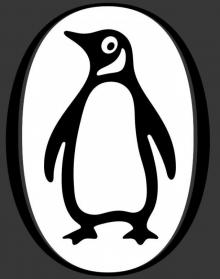 The Surgeon of Crowthorne
The Surgeon of Crowthorne Korea: A Walk Through the Land of Miracles
Korea: A Walk Through the Land of Miracles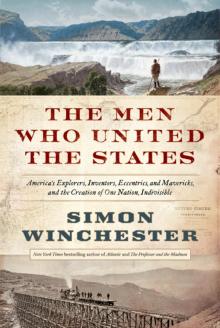 The Men Who United the States: America's Explorers
The Men Who United the States: America's Explorers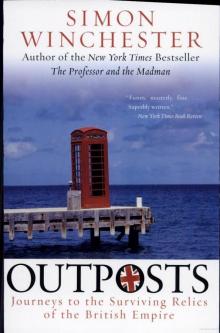 Outposts: Journeys to the Surviving Relics of the British Empire
Outposts: Journeys to the Surviving Relics of the British Empire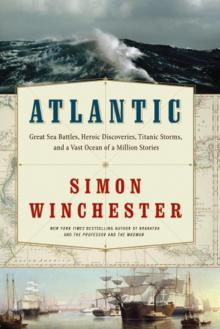 Atlantic: Great Sea Battles, Heroic Discoveries, Titanic Storms
Atlantic: Great Sea Battles, Heroic Discoveries, Titanic Storms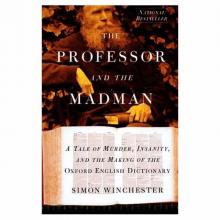 The Professor and the Madman: A Tale of Murder, Insanity
The Professor and the Madman: A Tale of Murder, Insanity A Crack in the Edge of the World
A Crack in the Edge of the World The Perfectionists: How Precision Engineers Created the Modern World
The Perfectionists: How Precision Engineers Created the Modern World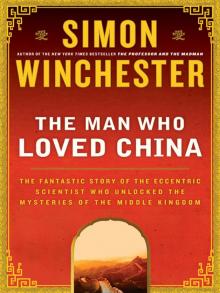 The Man Who Loved China: The Fantastic Story of the Eccentric Scientist
The Man Who Loved China: The Fantastic Story of the Eccentric Scientist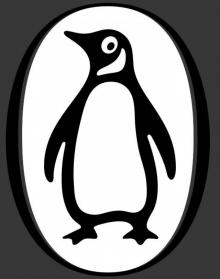 The River at the Center of the World: A Journey Up the Yangtze
The River at the Center of the World: A Journey Up the Yangtze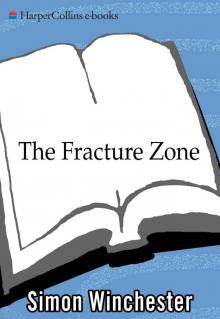 The Fracture Zone: My Return to the Balkans
The Fracture Zone: My Return to the Balkans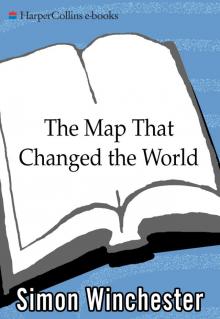 The Map That Changed the World
The Map That Changed the World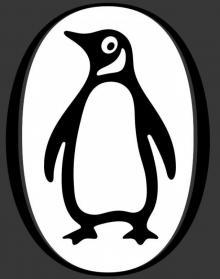 Krakatoa: The Day the World Exploded
Krakatoa: The Day the World Exploded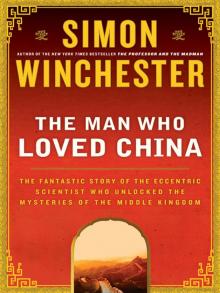 The Man Who Loved China
The Man Who Loved China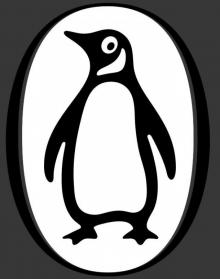 The River at the Centre of the World
The River at the Centre of the World Bomb, Book and Compass
Bomb, Book and Compass The Perfectionists
The Perfectionists The Meaning of Everything
The Meaning of Everything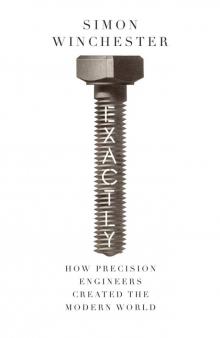 Exactly
Exactly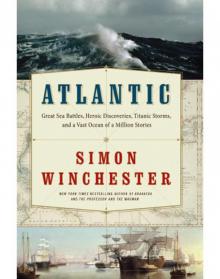 Atlantic
Atlantic Korea
Korea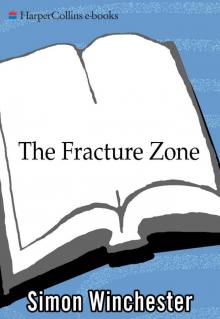 The Fracture Zone
The Fracture Zone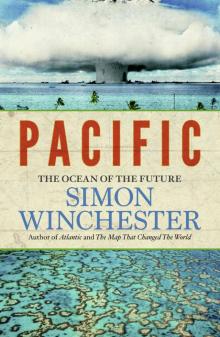 Pacific
Pacific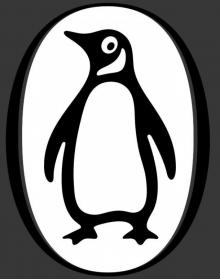 Krakatoa
Krakatoa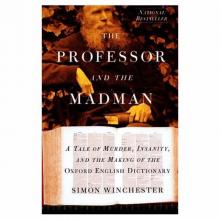 The Professor and the Madman
The Professor and the Madman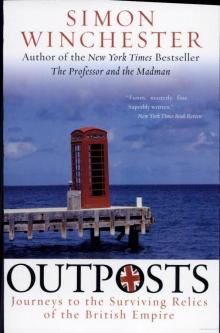 Outposts
Outposts